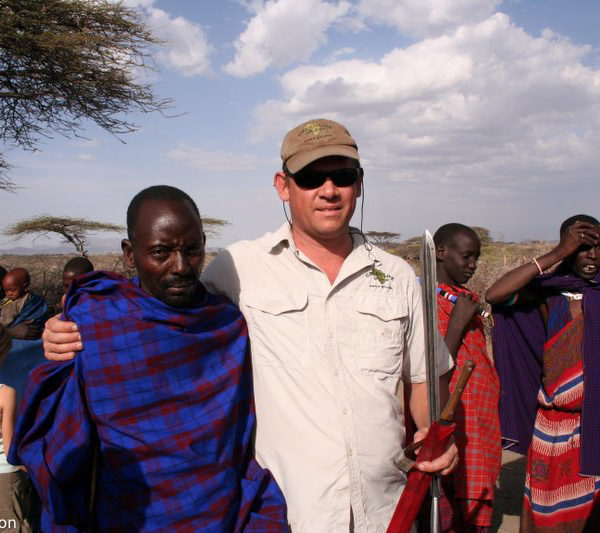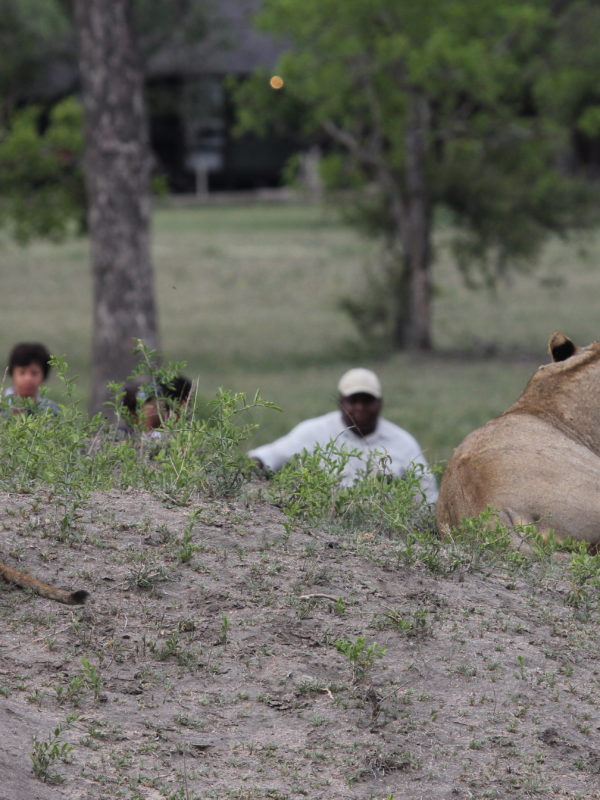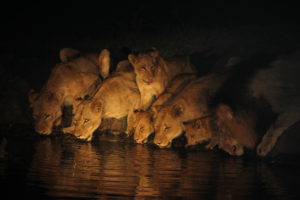The western edge of Savuti is encircled by the Magwikhwe sand ridge, 156 miles (100km) long and 65 feet (20 metres) high, which is the ancient shoreline of a super-lake that covered much of northern Botswana. It is difficult to imagine that this harsh dry landscape was once submerged beneath an enormous inland sea.
A channel from the Linyanti River once fed the now dry Savuti Marsh, which is the deepest part of the Mababe Depression and is the only part to have filled with water in recent history.
This marsh has something of a mystical renown as it can dry up or flood regardless of local rains. David Livingstone, on his way to ‘discover’ the Victoria Falls in 1851, commented, that it was a “dismal swamp,” but sometime around 1888 it started to dry up and remained completely parched until 1957. Camelthorn acacia trees established themselves in the channel and along the banks and grew to full size. During unexpected floods these trees were drowned but as the channel and marsh dried out again, the dead trees became one of the most prominent features of the landscape.
Today, parts of Savuti are almost desert-like with a scorching sun and hot sand, while at the other extreme are vast grass plains full of game, reminiscent of Tanzania’s Serengeti. These rich grasslands are boosted into fecundity by summer rains, at which time huge herds of zebras migrate south from the Linyanti to gorge on the abundant grazing. Savuti also contains a number of pans that hold water for months after the rains, enabling animals to remain long into the dry season.
Another strikingly different terrain found in Savuti, are the Gubatsa Hills. Formed some 980 million years ago during volcanic movement, these dolomite rock outcrops create a series of extraordinary hills. They rise to an astonishing 290 feet (90 metres) high, out of a completely flat landscape.
ANIMALS & BIRDS
The area promises sightings of endangered wild dog, which is said to be the most efficient hunter in Africa. Large concentrations of lion follow the annual zebra migration intently, and leopard and cheetah are to be seen. Many hyenas live here and researchers have found that lions loose 20% of their kills to them. Hyenas are formidable hunters in their own right but are opportunistic feeders who will annoy and threaten a pride of lions until they give up their meal. Savuti is also famous for its elephants that roam great distances for the best fodder.
Abdim Stork
Large secretary birds and kori bustards are often seen strutting around the Savuti marsh and small redbilled francolins provide as a noisy morning wake up call. Interesting summer migrants and water birds include Abdim’s storks, carmine bee eaters and even fish eagles. Little quelea finches are quite a spectacle as they gather in thousands. They reach a frenzy of numbers in about April when a single flock could contain tens of thousands of these small twittering birds.
SEASONS
Rainy season: Rains arrive from November to April, at which time the animals make their way to pastures rich in new grass. Sometime in November or December thousands of zebras migrate from the Linyanti in the north and move south through Savuti to the grasslands of the Mababe Depression. In February they start heading northwards again. Humidity and heat is high.
Dry season: From May to October the water pans dry up and the animals are attracted to three artificial waterholes. Elephants dominate these while other animals have to wait their turn. September and October can be extremely hot but game viewing is very rewarding as predators are concentrated around the waterholes.
SAVUTI SPECIALITIES
· Rare and endangered wild dog are a pleasure to observe
· Thousands of zebras moving slowly across the plains in their twice yearly migration, is a sight to behold
· Hyenas have the most complex social system of all African animals and are fascinating to watch at their den when youngsters are around
· Sit for hours watching elephants at waterholes
· Safari lodges offer luxury in a completely different environment from Chobe or Linyanti
· Quelea finches gather in flocks of tens of thousands
· The sage bush (or bitter bush) releases its herbal aroma as it is crushed by foot or vehicle







